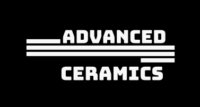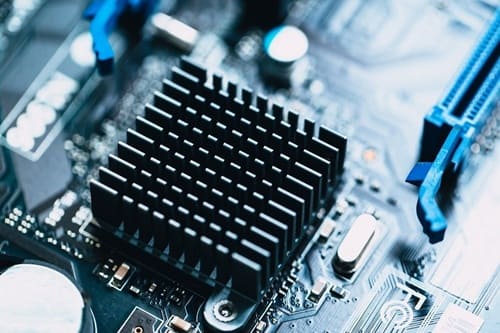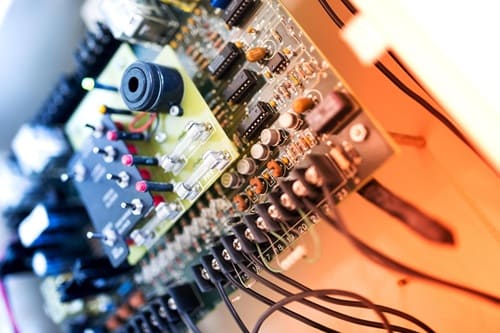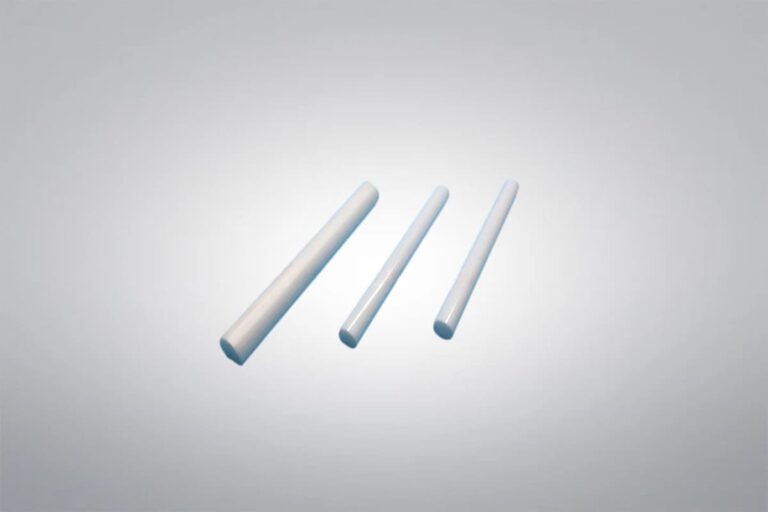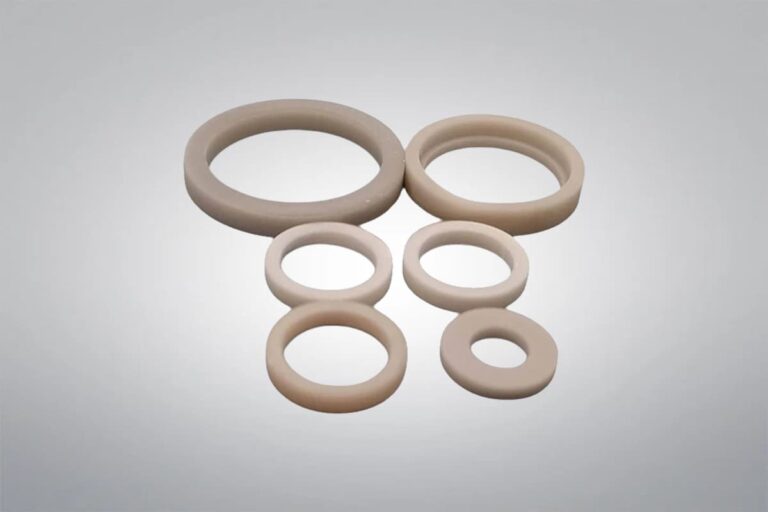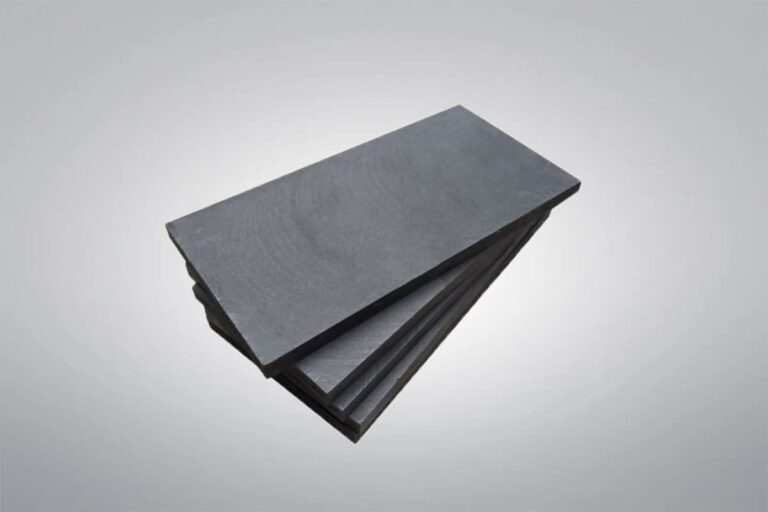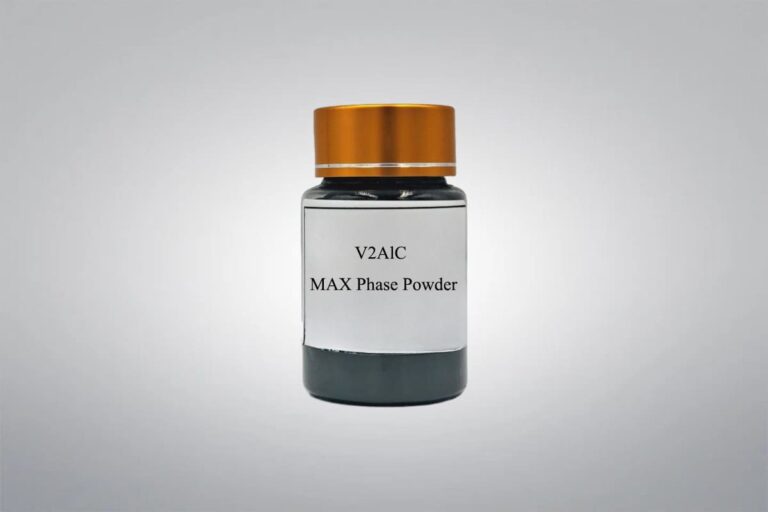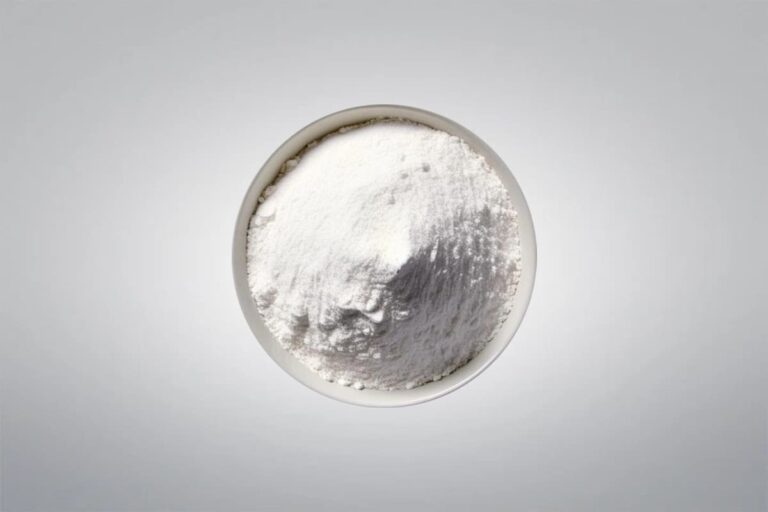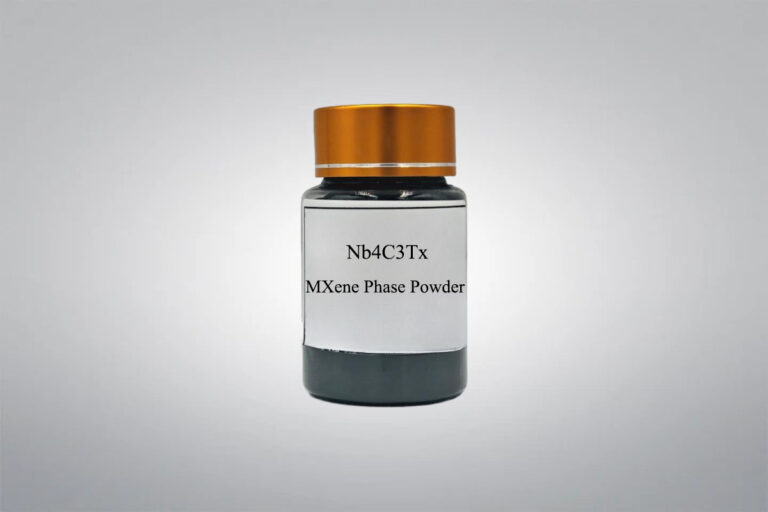Sustrato de nitruro de aluminio
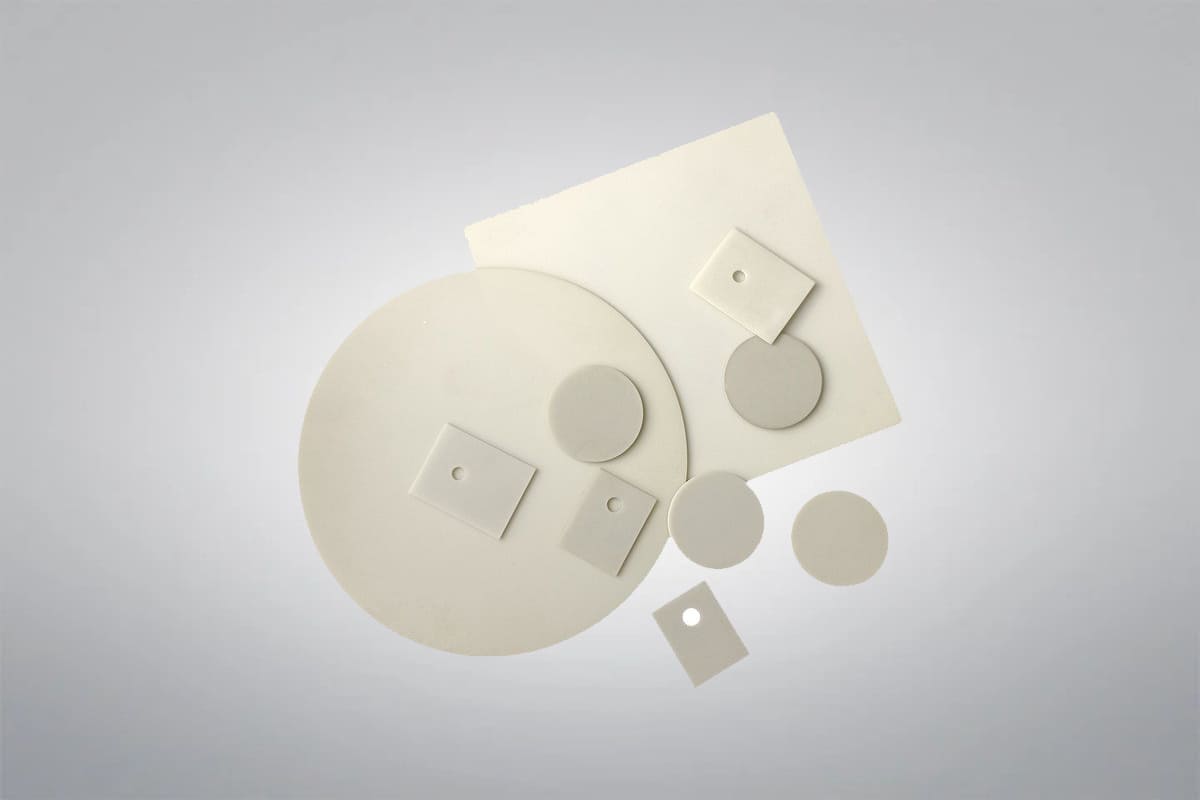
Sustrato de nitruro de aluminio
Pureza: 95%-99%
El sustrato de nitruro de aluminio es un material cerámico de alto rendimiento con una excepcional conductividad térmica, aislamiento electrónico y resistencia a altas temperaturas. Se aplica ampliamente en dispositivos electrónicos de alta potencia, envasado de LED, circuitos de microondas y sistemas electrónicos de automoción y aeroespaciales. Como proveedor y fabricante líder de productos de nitruro de aluminio de primera calidad, podemos suministrar sustratos de nitruro de aluminio de alta calidad con diversas especificaciones y precios competitivos, ofreciendo soluciones personalizadas para satisfacer requisitos específicos.
O envíenos un correo electrónico a sales@heegermaterials.com.Hoja de datos del sustrato de nitruro de aluminio
| Código de referencia: | HM1914 |
| Pureza: | 95%-99% |
| Densidad: | 3,32 g/cm3 |
| Apariencia: | Gris oscuro / Gris claro / Beige |
| Dimensiones: | Personalizado |
| Forma: | Rectangular, redondo o personalizado |
| Acabado superficial: | Desbaste, pulido o metalización |
Sustrato de nitruro de aluminio
El sustrato de nitruro de aluminio (AlN) está fabricado con cerámica de nitruro de aluminio de gran pureza. Puede proporcionar una gestión térmica eficaz en entornos de alta temperatura, junto con una baja pérdida dieléctrica y una excelente resistencia al choque térmico. Avanzado Cerámica Hub Podemos ofrecer opciones de moldeo a granel y de una sola pieza a medida para satisfacer diversos requisitos industriales y de investigación, con una personalización flexible y rápida del tamaño y la escala del producto.
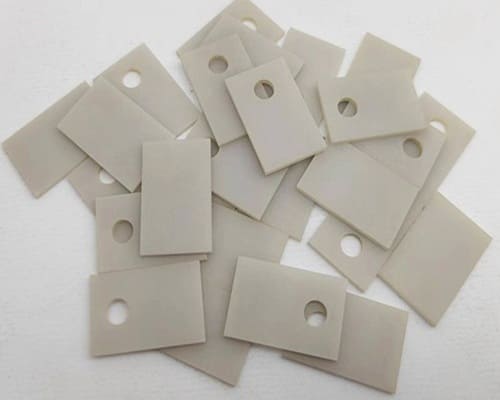
Sustrato de nitruro de aluminio con orificios 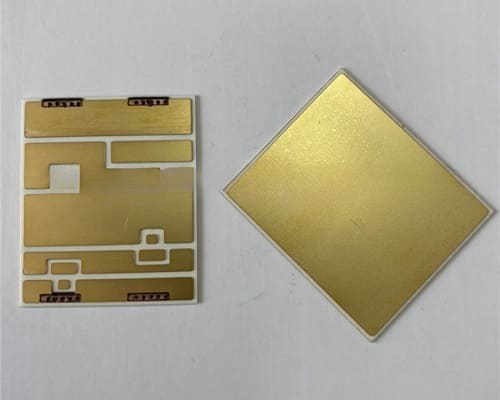
Sustrato de nitruro de aluminio revestido de cobre
Propiedades del sustrato de nitruro de aluminio
| Artículo | Unidad | AlN-170 | AlN-190 | AlN-200 | AlN-230 | |
| Densidad | g/cm3 | 3.3 | 3.3 | 3.28 | 3.3 | |
| Punto de fusión | ℃ | 2500 | 2500 | — | — | |
| Rugosidad superficial | μm | 0.2~0.6 | 0.3~0.5 | 0.2~0.5 | 0.2~0.6 | |
| Térmico | Conductividad térmica | 25℃ W/(m.k) | 170-190 | 190-210 | 204 | 233 |
| Coeficiente de dilatación térmica | 20~300℃ (10-6/℃) | 4.6 | 4.6 | 4.0-5.0 | 4.0-5.0 | |
| Eléctrico | Constante dieléctrica | 1 MHz, 25℃ | 8.56 | 8.56 | — | — |
| Pérdida dieléctrica | 1 MHz, 25℃ | 4.6×10-4 | 4.6×10-4 | — | — | |
| Resistividad volumétrica | 20℃.Ω.cm | 1.4×1014 | 1.4×1014 | >1014 | >1014 | |
| Rigidez dieléctrica | KV/mm | ≥15 | ≥15 | >20 | >20 | |
| Mecánica | Resistencia a la flexión | Mpa | 300-400 | 300-400 | 350 | 300 |
| Módulo elástico | GPa | 310-320 | 310-320 | — | — | |
| Alabeo | ~/25(longitud) | ≤3‰ | ≤3‰ | ≤3‰ | ≤3‰ | |
Especificaciones estándar del sustrato de nitruro de aluminio
| Producto | Espesor | Largo y ancho |
| Producto estándar de 170 W | 0,381 mm | 4×4 pulgadas (101,6×101,6 mm) 4,5×4,5 pulgadas (114,3×114,3 mm) 120×120 mm 5×5 pulgadas (127×127 mm) 5,5×7,5 pulgadas (139,7×190,5 mm) |
| 0,5 mm | ||
| 0,635 mm | ||
| 1,0 mm | ||
| 1,5 mm | ||
| 170W Producto no estándar | 0,1~0,2 mm | 2×2 pulgadas (50,8×50,8 mm) |
| 0,2~0,3 mm | 2×2 pulgadas (50,8×50,8 mm) 3×3 pulgadas (76,2×76,2 mm) 4×4 pulgadas (101,6×101,6 mm) 4,5×4,5 pulgadas (114,3×114,3 mm) | |
| 2,0~3,0 mm | ||
| 1,0~3,0 mm | 150 mm, 200 mm, 300 mm | |
| 200W | (0,3~0,38)±0,01 mm | 4,5×4,5 pulgadas (114,3×114,3 mm) |
| 230W | (0,3~0,38)±0,01 mm | 4,5×4,5 pulgadas (114,3×114,3 mm) |
Ventajas del sustrato de nitruro de aluminio
- Más de 7 veces la conductividad térmica de la alúmina.
- Coeficiente de dilatación térmica próximo al del silicio, lo que garantiza una gran fiabilidad para el montaje de grandes chips de silicio y la resistencia a los ciclos térmicos.
- Excelente aislamiento eléctrico con una constante dieléctrica baja.
- Resistencia mecánica superior a la de la alúmina.
- Excelente resistencia a la corrosión de metales fundidos.
- Contenido mínimo de impurezas, no tóxico y de gran pureza.
Aplicaciones del sustrato de nitruro de aluminio
- Industria electrónica: Se utilizan como sustratos para dispositivos electrónicos de alta potencia (por ejemplo, módulos de potencia, IGBT y MOSFET), ya que ofrecen una disipación térmica y un aislamiento eléctrico superiores.
- Embalaje LED: Se emplean como sustratos para chips LED, aprovechando la alta conductividad térmica para mejorar la disipación del calor y prolongar la vida útil del dispositivo.
- Microondas y RF: Utilizados en circuitos de microondas y dispositivos de RF como sustratos debido a su baja pérdida dieléctrica y alta estabilidad térmica.
- Electrónica del automóvil: Aplicado en convertidores de potencia y módulos de control de vehículos eléctricos para mejorar la gestión térmica y la fiabilidad.
- Aeroespacial: Utilizados en sistemas electrónicos de alta temperatura y alta fiabilidad como sustratos para soportar componentes críticos.
Propiedades del nitruro de aluminio
Grados del material de nitruro de aluminio
HMAN1000 es nuestro nitruro de aluminio estándar de alta pureza con una conductividad térmica de 170 W/mK. Se trata del mismo rendimiento térmico que nuestro material de sustrato, pero ofrece la posibilidad de piezas más grandes en longitud/anchura y en espesores de hasta 30 mm.
El HMAN1000 tiene un buen coeficiente de expansión térmica, equiparable al del silicio y el nitruro de galio en amplios intervalos de temperatura.
Aplicaciones HMAN100:
- Aisladores de alta potencia
- Componentes láser
- Disipadores refrigerados por agua
- Electrónica de potencia
- Componentes aeroespaciales, médicos y semiconductores
HMAN1000S 170 W/mK es nuestro material de sustrato estándar de alta conductividad térmica, aunque también disponemos de otros grados de alto rendimiento.
Aplicaciones HMAN1000S:
- Disipadores de calor
- Difusores de calor
- Disipadores térmicos para láser Rectificadores de potencia
- Aeroespacial, electrónica de potencia, rectificadores
HMAN2000 es uno de nuestros grados mejorados de nitruro de aluminio, que ofrece todas las prestaciones mecánicas de HMAN1000 con las ventajas mejoradas de una conductancia térmica de 200 W/mK.
Aplicaciones HMAN2000:
- Disipadores de calor
- Difusores de calor
- Disipadores térmicos para láser Rectificadores de potencia
- Aeroespacial, electrónica de potencia, rectificadores
HMAN3000 es una de nuestras calidades mejoradas de nitruro de aluminio que ofrece todas las prestaciones mecánicas de HMAN1000 con las ventajas mejoradas de una conductancia térmica de 230 W/mK.
Aplicaciones HMAN3000:
- Disipadores de calor
- Difusores de calor
- Disipadores térmicos para láser Rectificadores de potencia
- Aeroespacial, electrónica de potencia, rectificadores
HMAN4000 es una de nuestras calidades mejoradas de nitruro de aluminio que ofrece todas las prestaciones mecánicas de HMAN1000 con las ventajas mejoradas de una conductancia térmica de 200 W/mK.
Aplicaciones HMAN4000:
- Disipadores de calor
- Difusores de calor
- Disipadores térmicos para láser Rectificadores de potencia
- Aeroespacial, electrónica de potencia, rectificadores
Mecanizado de cerámica de nitruro de aluminio
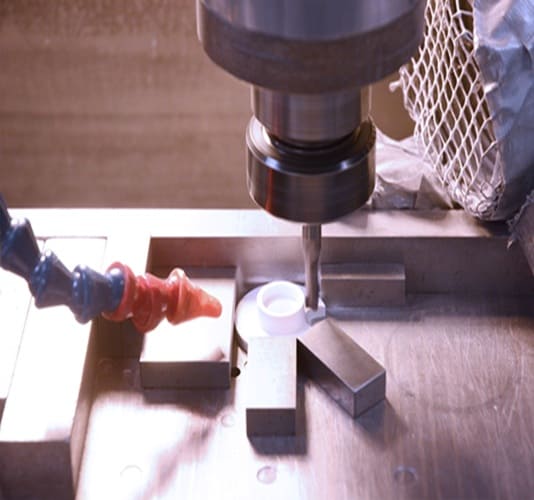
El mecanizado de cerámica de nitruro de aluminio (AlN) es un proceso preciso utilizado para fabricar componentes de alto rendimiento a partir de materiales de nitruro de aluminio. El mecanizado de cerámica de nitruro de aluminio requiere equipos y técnicas especializados para tratar su fragilidad y dureza. Un utillaje adecuado y entornos controlados son esenciales para evitar daños en el material y conseguir el acabado superficial y la precisión dimensional deseados. Los métodos de mecanizado habituales son los siguientes:
- Corte de diamantes: Las herramientas diamantadas se utilizan para conseguir una precisión fina y acabados superficiales suaves, ideales para formas complejas.
- Corte por láser: Un método sin contacto utilizado para formas intrincadas, con gran precisión y un impacto térmico mínimo.
- Rectificado de precisión: Se utiliza para conseguir tolerancias finas y acabados superficiales. Requiere un cuidado especial para evitar que se agriete o astille debido a la fragilidad de la cerámica.
- Electroerosión por hilo (EDM): Método utilizado a menudo para cortes intrincados, especialmente para geometrías finas y complejas.
Envases cerámicos de nitruro de aluminio
Los productos cerámicos de nitruro de aluminio suelen envasarse en bolsas selladas al vacío para evitar la humedad o la contaminación y se envuelven con espuma para amortiguar las vibraciones y los impactos durante el transporte, lo que garantiza la calidad de los productos en su estado original.
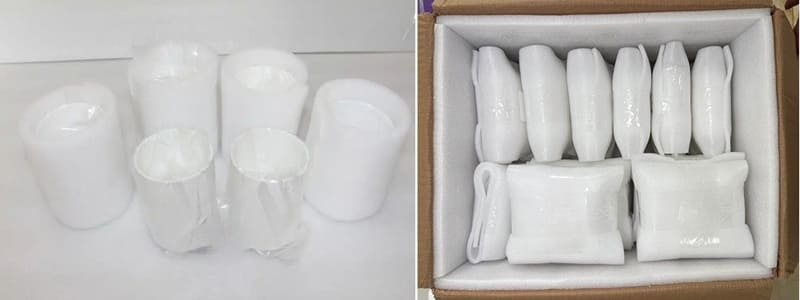
Descargar
Solicitar presupuesto
Lo comprobaremos y le responderemos en 24 horas.
